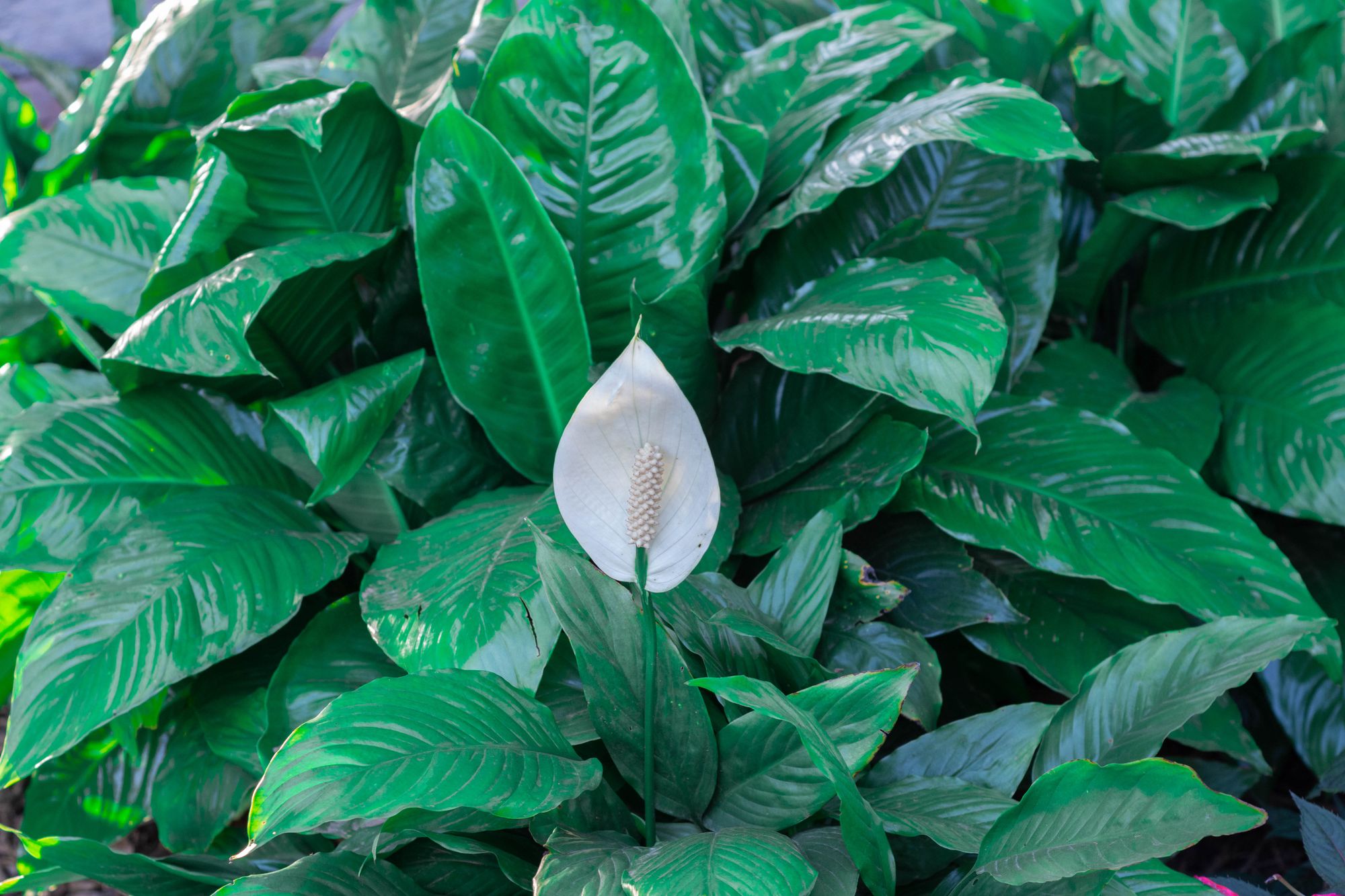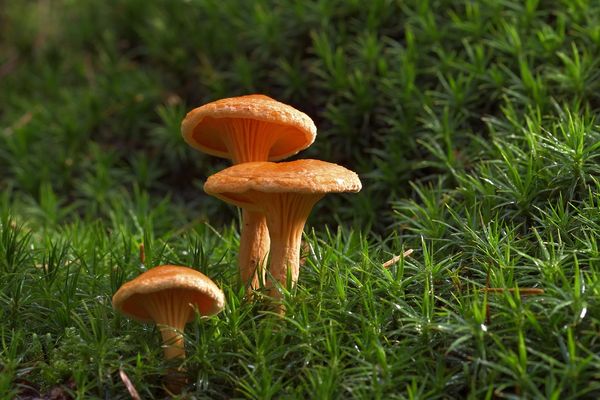Seeing black foliage on your cherished indoor plants might be alarming, especially on a plant with sparkling green leaves renowned for being particularly lovely.
If you want to learn what causes this pandemic, how to treat it, and how to prevent it from occurring again, you presumably prioritize houseplants.
Black Leaves on Peace Lilies
Even the best among us may be alarmed by a Peace Lily with black leaves, but before you start taking severe measures, take a moment to read this article. It explains the most frequent causes of this popular indoor plant generating black leaves and what you must do to repair the problem.
What Causes Peace Lily Leaves To Turn Black?
It is crucial to give close attention to the pattern or discoloration of your plant, as this information is essential for identifying its source. Your understanding of what's causing the blackening of the leaves and how to fix it will increase accordingly. Among the most typical signs are:
Black Leaves
The most common cause of a leaf that has gone black over time is dryness. Severe underwatering causes the cells of the plant to become dehydrated.
When the water in a plant's leaves disappears via transpiration and is not replenished by routine watering, the plant's cells get dehydrated, which causes the leaves to desiccate and become black, much like the foliage in this picture.
That being said, there are several additional reasons why leaves could become black, such as:
- Pests
- Unfiltered water
- Lighting issues
- Temperature shock
- Low humidity
- Over-fertilizing
- Excessive or insufficient watering
- Disease via infection
Not only will these problems often show up as black leaves but also as brown, yellow, or even black dots on the leaves. Here is a list of possible presentations for your Peace Lily leaves and the potential causes of those presentations:
Turning Black and Yellow Leaves
The following causes might cause yellow and black staining on a leaf:
Excessive watering
If you give your Peace lily too much water, the leaves may become yellow and black.
Lighting issues
Another issue that might cause your plant's leaves to become yellow with black blotches is direct sunshine exposure. Instead of black and yellow leaves, yellowing is often caused by inadequate exposure to light.
Posts
Mealybugs and spider mites, known to attack indoor plants that love dampness, may also cause your peace lilies' leaves to become speckled with black and yellow.
Black-Tipped Peace Lily Leaves
Black tips on a Peace lily are often first seen when brown patches have appeared. This usually happens as a consequence of
Water that has yet to be filtered
Tap water's chlorine and other contaminants may harm peace lilies. The tips of your plant's leaves may brown due to the constant usage of unfiltered water. They result in sharp black edges.
Overzealous fertilizing
Your Peace lily may have root or leaf burn if you fertilize too often or use more fertilizer than is necessary.
Temperature shock
Sudden temperature drops might shock your Peace lily badly. Any temperature below 60°F (15.5°C) might start to impair your Peace lily's growth efficiency.
Your peace lily could not survive the winter if temps drop to 45°F (7.2°C) or below. The blackening of the leaf margins is one of the symptoms of temperature shock. The plant may not survive if left alone.
Low humidity
Peace flowers like high humidity levels. They are particularly considering that it will lower their pace of sweat.
In low-humidity environments, on the other hand, higher transpiration rates will result in darker leaf tips as more moisture is taken from the plant into the surrounding air.
Viral, bacterial, or fungal infections are unlikely to be present in a new bag of store-bought potting mix due to the manufacturing procedures utilized before the product is delivered. However, these problems are contagious from plant to plant and via soil pollution. As a result, the soil is invaded by bacteria, resulting in illness.
One example is pythium, which may enter your plant container through fungus gnats drawn to moist soil. Once it is present, it may lead to root rot, which will initially discolor the plant's leaves.
Black Spots on the Peace The Roots of a Lily
The primary cause of the black patches on the roots of your Peace lily is root rot. These white roots may discolor due to overwatering or damp soil before taking on a slimy feel and eventually decomposing.
As the problem worsens, black patches will appear on the peace lily's leaves. If it continues, the plant's stems and leaves will darken and be mushy.
Every time I report, I like to check for root rot. Check whether the roots are firm, white, or creamy by gently brushing off the dirt.
Remove the afflicted roots if you see any black patches to stop the illness from spreading. Clean your cutting instruments thoroughly before and after each use to prevent infected roots from spreading to unaffected roots.
Why Peace Lilies Have Black Leaves and How to Fix It
You can start solving the issue after you've located its source. As you can anticipate, time is essential, as is acting quickly to prevent additional delay and effectively correcting the issue.
Once you've determined what the issue is, follow these specific steps:
Overcoming Watering Issues
Overwatering may leave the soil soggy, encouraging the growth of hazardous bacteria.
This might result in root rot, which can seriously harm your Peace lily.
You may assist create the balance required for this circumstance by checking the moisture content of the top 2 inches of the soil. Your plant will require watering if it is dry.
Peace lilies should be planted in containers with enough drainage holes to drain excess water from the bottom to avoid soggy soil. While watering, I like to set my pots in the sink so that any extra water runs out instead of collecting in the drip tray.
The soil may be kept moist without becoming mushy in this way.
How Frequently Must A Peace Lily Be Watered?
I stick two fingers into the container approximately two inches deep to check the soil's moisture level. I know it's time to water when the ground is dry. Because their leaves and blossoms will droop when thirsty, peace lilies are also excellent at letting you know when they need to water.
For Peace Lily, Use Bottled Or Distilled Water
Because peace lilies are sensitive to the toxins in tap water, it is preferable to water them with distilled or bottled water.
Suppose you leave your tap water out overnight for the toxins to break down before using it to water your houseplant. In that case, you may avoid the environmental and financial problems of buying bottled water.
Soil Conditions
Peace lilies hate soggy roots and saturated soil. This entails using only pots with bottom drainage holes and ensuring the ground is completely drained after each watering session.
Since they also dislike dry soil, check it periodically for dryness to prevent the possibility of drought stress.
Too Much Direct Sunlight
When exposed to direct sunlight, peace lilies dislike it and have darker tips.
Because of this, it is ideal to put your houseplant next to windows that get morning sunshine; it should be kept out of the light's direct path but close enough to it.
Low Humidity
Peace lilies are acclimated to excessive humidity since they are native to tropical forest environments. Therefore, ambient levels must be kept at 50% or 60%.
Regular misting or setting the plant on top of gravel submerged in very shallow water will increase humidity levels.
Alternatively, you might group your plant with other tropical and humidity-loving houseplants to benefit from the moisture those plants exude.
Over Fertilizing
Shade-tolerant species often need less fertilizer than other indoor plants. So, when in doubt about how much fertilizer to give your Peace lily, give it less. Clemson Cooperative Extension suggests using about a quarter of the recommended quantity to prevent overfeeding if you use fertilizer specially designed for houseplants.
Fertilizer may create the accumulation of salts in the soil if it is administered in excess. Your peace lily's roots may shrivel up, impairing its capacity to absorb water and nutrients. Their diminished function may cause leaves to wilt, turn yellow, and even develop black edges.
When Should Peace Lily Be Fertilized
In the spring and summer, peace lilies should be fed every two weeks, and in the autumn and winter, every six weeks.
Pests
It's possible for pests to harm your leaves. Some of them, like insects or arachnids, may make them dark or even black. Several of the most common perpetrators who are likely to engage in this conduct are examined in greater detail below.
Common Pests On Peace Lily
In this regard, mealybugs and spider mites are two of the most prevalent parasites. In this subsection, I describe how to recognize them, the problems they create, and how to eliminate these arthropod invaders from your floral buddy.
Mealybugs
Related to scale insects, mealybugs may be recognized by their many appendages, large antennae, oval bodies, and pale, waxy coating. Like your peace lily, they are native to the tropics and favor perennial plants.
Nothing is off limits to this creepy crawly regarding a plant. Not even the foundation. In addition, they reproduce prolifically; based on the subset of the species to which they belong, they may either give birth to their offspring or hatch 600 eggs. In any case, your peace lily will produce a new generation every 4 to 12 weeks.
Mealybugs are fond of plant sap. They may seriously harm agricultural plants in warmer climes since they are also rather hungry. The leaves they assault often turn yellow and finally fall off since there is where they join the stem.
In addition to sucking sap, mealybugs also leave behind honeydew, which may encourage the development of fungi that produce sooty mold. Mold is generally not harmful but may interfere with photosynthesis when present in large quantities.
Spider Mites
Spider mites are related to spiders and first seem to be tiny moving specks. They like establishing colonies on the leaves undersides and creating a distinct web matting. Tomatoes, melons, and sweet corn come to mind as examples of vegetables they are known to like. They aren't opposed to landing on your peace lily, however.
Spider mites can produce 200 eggs and complete their life cycle in under seven days. These spiders can also locate and feed on the cells of your peace lily.
Yellowing, bronzing, and finally, shedding are the results that may impact your peace lily's general health.
How to Eliminate a Pest Concern with Peace Lilies
Bug spray may not always work to eliminate these arthropods; in the case of mealybugs, their waxy coats may provide some defense.
Considering the potential for plant infection, it is strongly recommended to prevent these parasites from infiltrating your home in the first place. Every new plant has to be carefully examined before being brought inside, and only then should that decision be made.
Neem oil is one of your most excellent options if they get inside. It is also secure to use. Remove any visible remnants of the insect before wiping leaves and stems with a diluted dish soap and water solution. As most pests like to settle down, pay close attention to stem junctions and the underside of leaves.
After that, spray the Peace Lily with neem oil and wipe all the afflicted places with a dry, clean towel. Continue doing this until the insect problem is under control.
Alcohol rubdown is yet another effective treatment. It would be best to eliminate any signs of the infestation, wipe with a dilute dish soap solution, and then soak some cotton in rubbing alcohol, much as when applying neem oil. Dab then on the affected parts. To prevent harming fragile stems and leaves, remove any extra rubbing alcohol by wiping it away.
Whatever technique you employ, isolate your Peace lily from other plants to prevent cross-contamination.
Black Leaves on a Peace Lily After Propagation
A Peace lily's odd black leaf after reproduction is not unusual. The major causes of this are insufficient irrigation or over-fertilization.
Remember to avoid feeding your plant until it has begun to produce new shoots and to keep the soil of your propagated plant wet but not soggy. This indicates that your plant is well-established and has a strong root system.
Make careful to place your propagated plant in fresh potting soil. This will remind you that your plant has enough nutrition for roots to establish themselves.
Peace Lily's Black Leaves After Repotting
Repotting is similar to propagating, except the peace lily is transferred into its new environment.
Avoid fertilizing and always plant in new potting soil to prevent the likelihood of leaves becoming black.
Pruning A Peace Lily
Blooms on peace lilies endure for four to eight weeks. After that, they deteriorate and wilt. You will then need to trim them right at the root. Your peace lily will be able to grow fresh blossoms if you do this.
Wilted or damaged leaves must also be clipped to lessen stress on the plant and allow it to focus its energy on better development.
How to Clean the Dirt Off a Peace Lily
Immediately prune any leaves that have turned black. Your pruning shears will benefit from a quick dip in disinfection after each removal since there may be a danger of infection. Once you're done, there will be space for new growth to enhance the appearance of your plant.
Conclusion
The factors affecting the health of your peace lily plant can be numerous, but careful observation and appropriate treatment can save your beautiful tropical plant. If the peace lily flowers are turning black or developing light brown, reddish or purple borders, it's often an indication that the peace lily suffered from over-watering, poor peace lily soil health, or exposure to extreme temperatures. To mitigate these issues, the first step is to assess the peace lily roots. If they are soggy or overly damp, consider repotting the plant into fresh soil and maintaining a more controlled watering schedule.
Moreover, a beneficial home remedy to treat the fungal infection, one of the common issues leading to brown leaves, involves using a simple ingredient - baking soda. Mixing a teaspoon of baking soda in a liter of water and using a spray bottle to evenly distribute the mixture onto the peace lily leaves can help to fight off fungi. But remember, baking soda is only a short-term solution and improving the plant's overall care regimen is key to long-term health.
Keeping peace lily houseplants healthy might seem challenging, especially if you are new to caring for tropical plants. But with careful attention to watering, light exposure, and occasional use of remedies like the baking soda spray, these problems can be managed effectively. Overall, understanding the reason behind your peace lily leaves turning black will guide you in making the necessary adjustments to bring your peace lily plant back to its lush, vibrant life.






